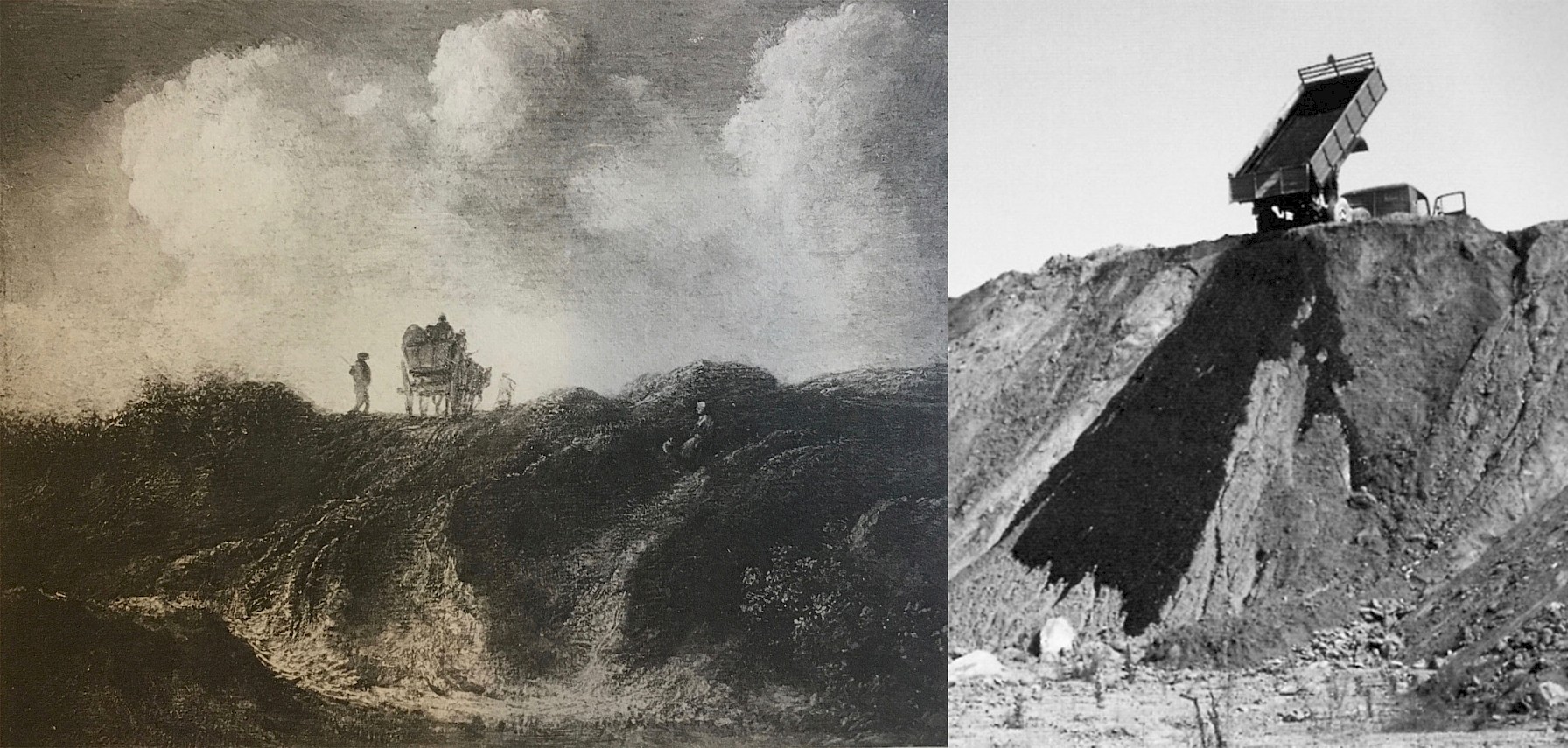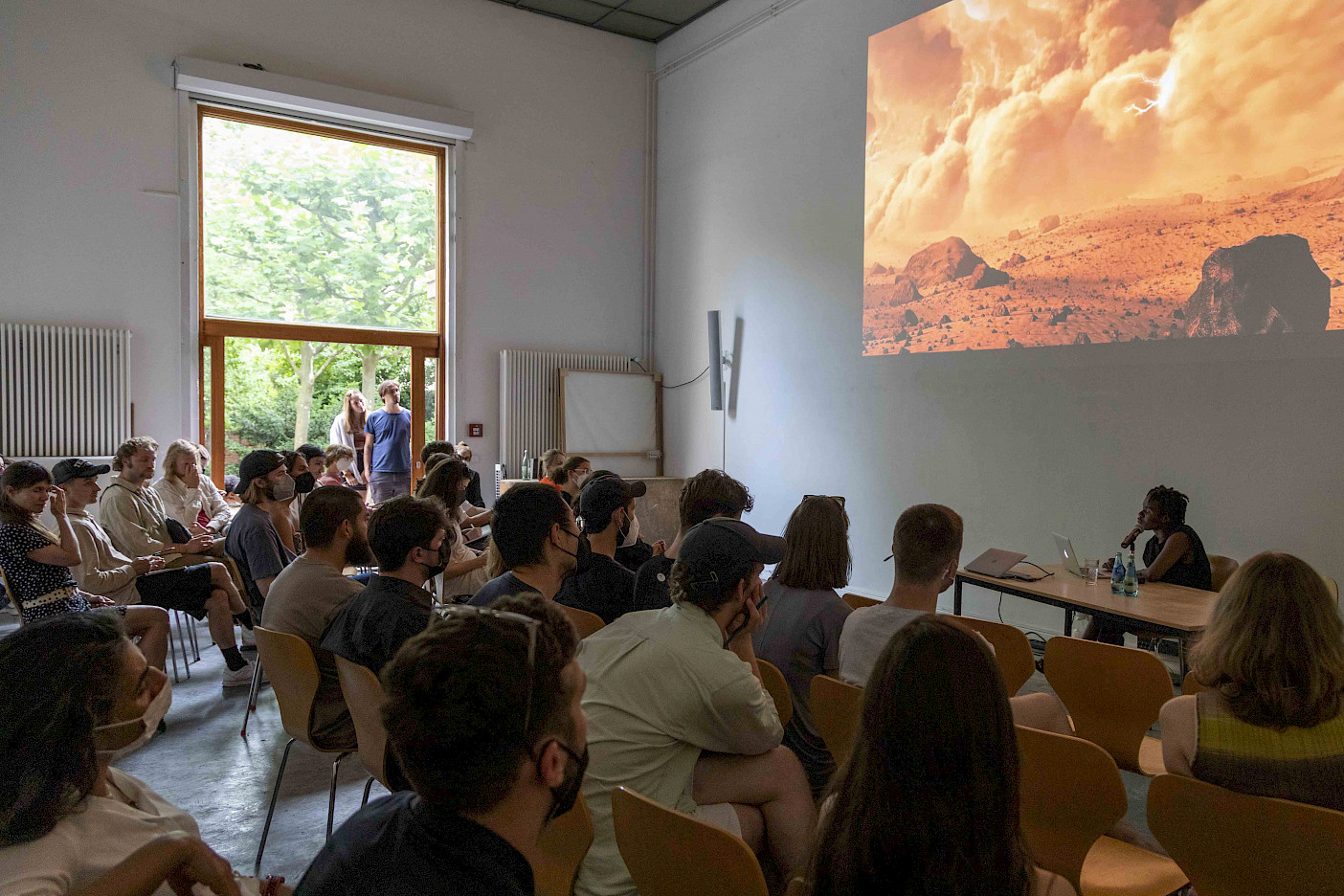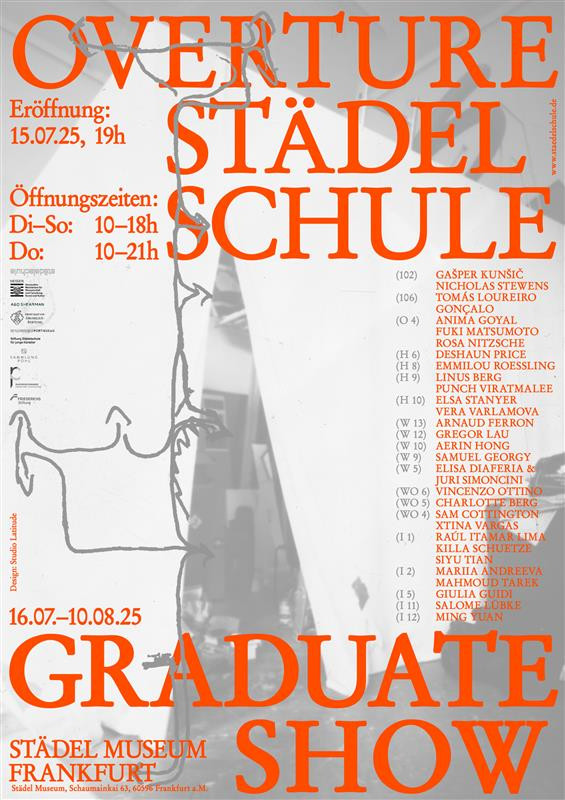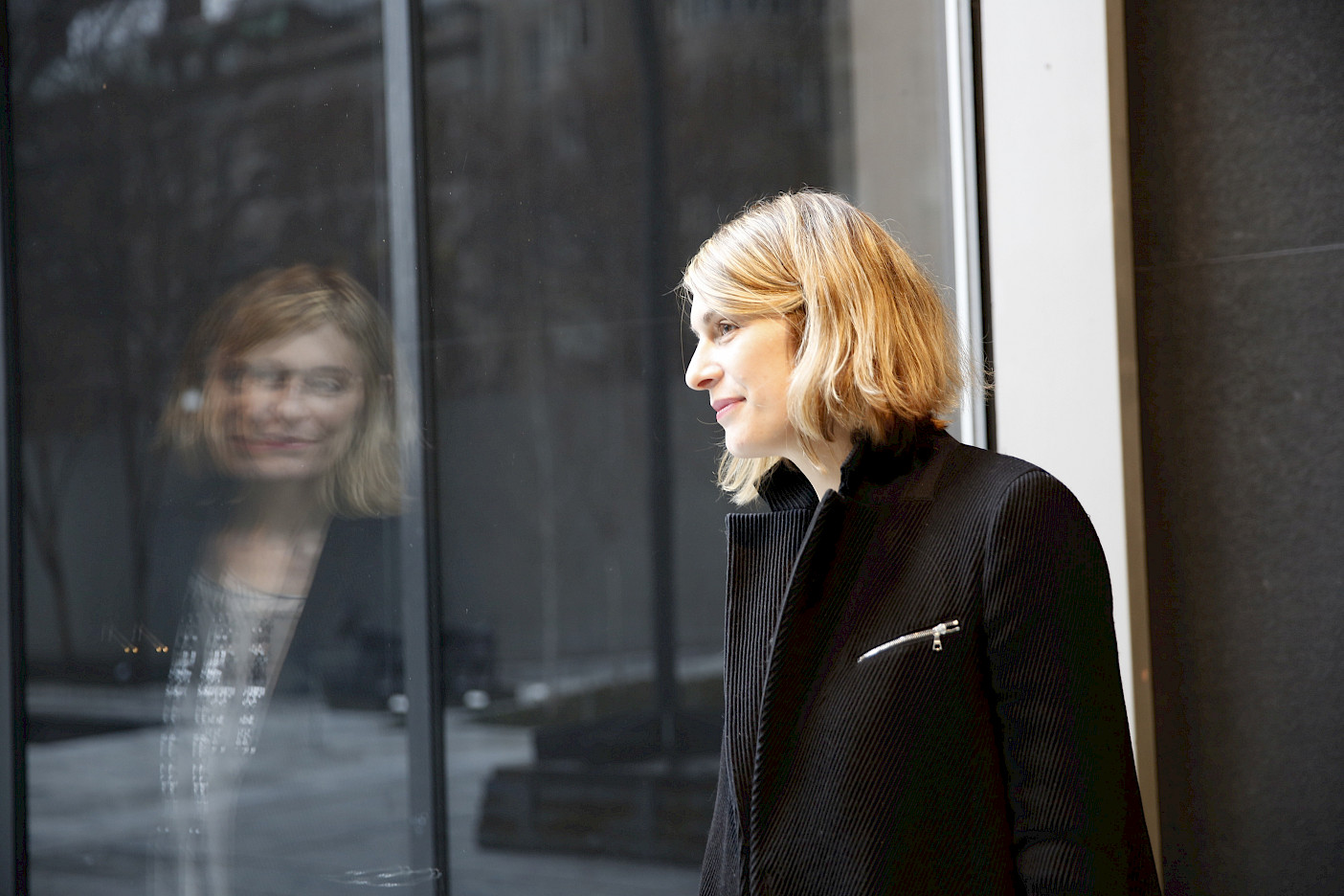Städel Museum, Schaumainkai 63, 60596 Frankfurt am Main
Opening hours: Tue–Sun, 10am–6pm; Thu, 10am–9pm
Opening: Tuesday, July 15, 2025, 7pm–10pm
Today
Ongoing
Summer Semester 2025
Information, 22 April – 25 July 2025
Upcoming
Overture – Graduate Exhibition
Exhibition, 15 July – 10 August 2025, 19:00
Ana Janevski: Looping, Relaying and Echoing. Three Curatorial Strategies
Lecture, 16 July 2025, 19:00
Tanya Lukin Linklater: _structural_flex_
Lecture, 8 July 2025, 19:00
Florence Jung: Doing nothing?
Lecture, 24 June 2025, 19:00
Rabih Mroué: Shot/Counter Shot. Rethinking the Reverse
Lecture, 17 June 2025, 19:00
Adir Jan & Emrah Gökmen: On the Shores of the Munzur, on the Shores of the Murat
Concert, 12 June 2025, 20:00
Miloš Trakilović: Love Songs & War Machines
Lecture, 10 June 2025, 19:00
Anna Roberta Goetz: 36. Bienal de São Paulo. Not All Travellers Walk Roads / Of Humanity as Practice
Lecture, 3 June 2025, 19:00
Jimmy Robert
Lecture, 27 May 2025, 19:00
Klein: No Degree, No Budget, No Problem
Lecture (20.5.) Concert (21.5.), 20 – 21 May 2025
Julian Irlinger: Reanimation and Reconstruction
Lecture, 13 May 2025, 19:00
İmran Ayata & Bülent Kullukçu: Songs of Gastarbeiter
Music Lecture, 8 May 2025, 19:00
Enzo Camacho & Ami Lien: Langit Lupa (Heaven Earth)
Screening (5.5.) Lecture (6.5.), 5 – 6 May 2025, 19:00
Helen Marten: Animal Hours
Lecture, 29 April 2025, 19:00
Application: Master of Arts Program in CURATORIAL AND CRITICAL STUDIES
Application, 10 April – 31 May 2025
Semester Break Spring 2025
Information, 14 February – 21 April 2025
Water Cooler Talks 2025
Event, 8 – 9 February 2025
Rundgang 2025
Exhibition, 7 – 9 February 2025, 10:00–20:00
Trisha Donnelly
Lecture, 30 January 2025, 19:00
Kerstin Brätsch: Parasite Painting
Lecture, 28 January 2025, 19:00
Emma Enderby: Curating in and out of Place
Lecture, 14 January 2025, 19:00

Lytle Shaw: Golden Age Smithson
In the essay A Sedimentation of the Mind (1968) Robert Smithson proposes that artists move away from then familiar ideas of cool or hot art toward those of dry, or better, wet art. “The wet mind enjoys ‘pools and stains’ of paint. ‘Paint’ itself appears to be a kind of liquefaction. Such wet eyes love to look on melting, dissolving, soaking surfaces.” Smithson’s immediate reference is color field painting, and its dominant reception within models of instantaneous perception that would minimize precisely these materials, durational aspects of this painting’s physical basis in pooled, poured pigment. While many of Smithson’s sculptures can be imagined as cultivations of the slow pooling and soaking that color field paintings evokes but represses, Lytle Shaws lecture will reframe the artist’s one Dutch earthwork – Broken Circle/Spiral Hill (1971) – as a surprisingly systematic engagement with arguably the first wet, liquefaction art: Dutch seventeenth-century landscape painting. Linking Smithson’s and the Dutch painters’ aesthetics of land reclamation, the talk will excavate a soggy path through a little known Golden Age Smithson, locating key precedents for his interest in wet art in the works of Jacob van Ruisdael, Meindert Hobbema, and especially Jan van Goyen, who pooled wet pigment on his panels and gradually pulled recognizable forms out of them, re‐enacting the work of Dutch hydraulic engineers.
Lytle Shaw is a New York-based writer. A contributing editor for Cabinet magazine and a professor of English at New York University, his books of poetry and prose include Cable Factory 20 (1999), The Lobe (2002), The Moiré Effect (2012), The Mollino Set (forthcoming, 2020), as well as many collaborative books with artists such as Jimbo Blachly, Emilie Clark, and Brad Brown. Lytle Shaw’s critical works on poetry and art history include Frank O’Hara: The Poetics of Coterie (2006), Fieldworks: From Place to Site in Postwar Poetics (2013), Narrowcast: Poetry and Audio Research (2018), and New Grounds for Dutch Landscape (forthcoming, 2020). Shaw has also published essays on artists including Zoe Leonard, Robert Smithson, Gerard Byrne, The Royal Art Lodge, and Paul McCarthy for museums including Reina Sofia, the DIA Center, Whitechapel Gallery, De Hallen, and the Drawing Center.


